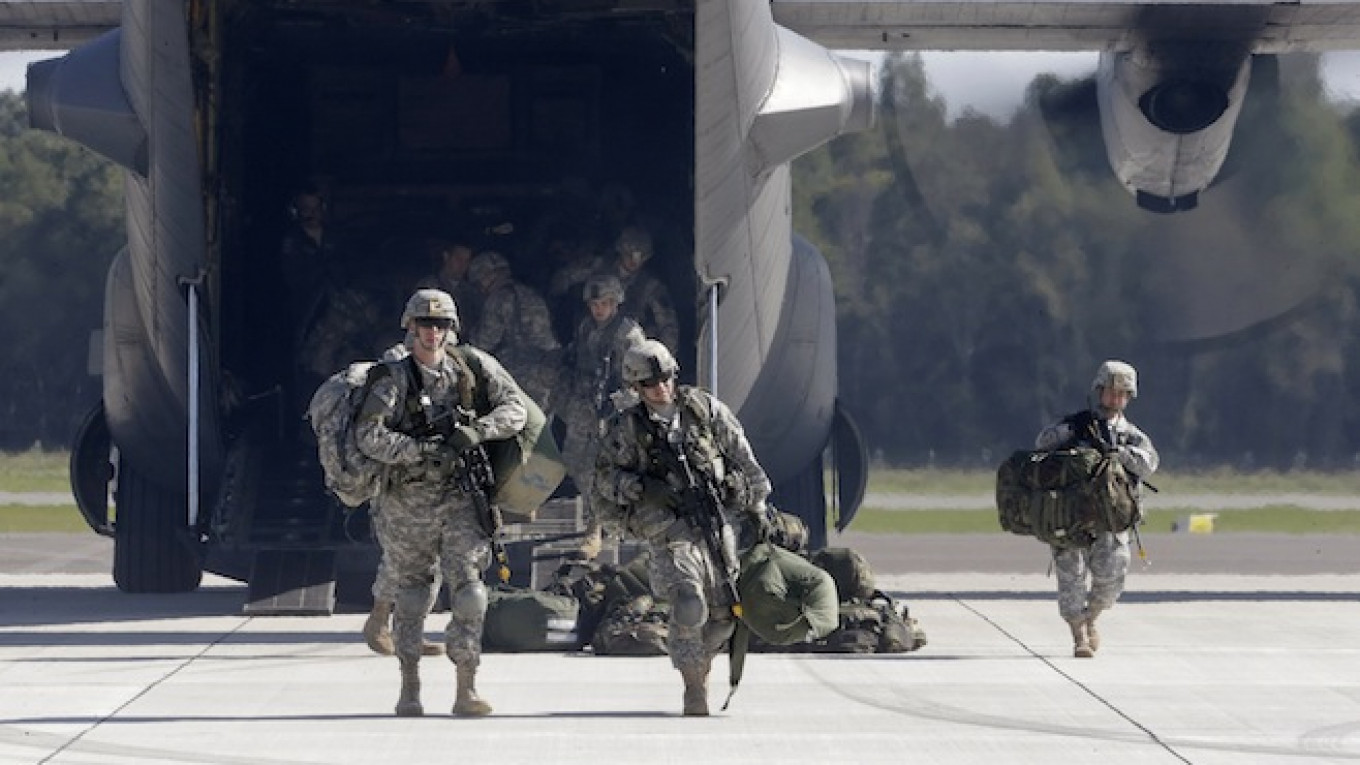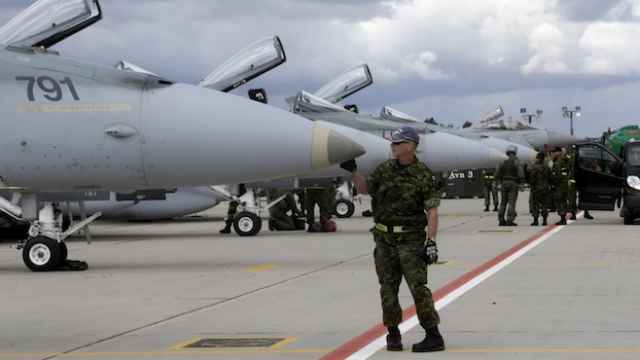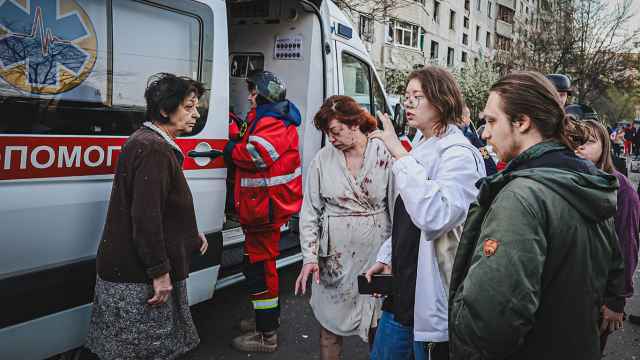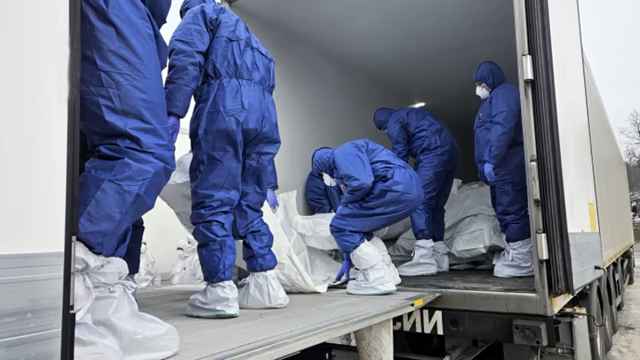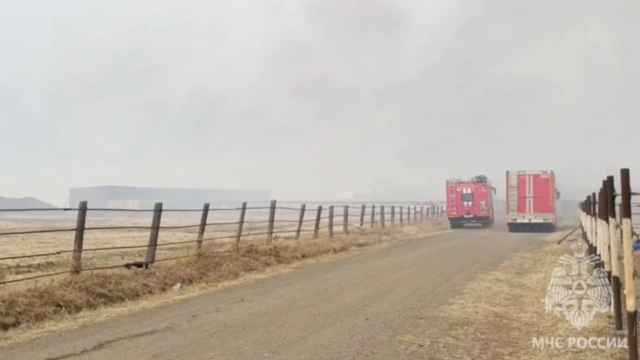U.S. troops and tanks will deploy across the three Baltic states and Poland in the next two weeks on a mission designed to deliver an unmistakeable message of NATO resolve to Moscow.
The "Ironhorse" armored cavalry unit, with around 700 soldiers, some 20 M1A1 Abrams main battle tanks with Bradley and Stryker armored fighting vehicles, is one of the most formidable U.S. military forces to be sent onto former Soviet soil. Several of the bases and training areas it will operate from were built for the old Soviet Red Army.
The aim is to convince Moscow that — unlike in non-NATO Ukraine — any Russian interference in Lithuania, Latvia or Estonia would put it at war with the Western alliance.
All three countries were once part of the Soviet Union and analysts say Moscow would dearly like to reassert its influence there, particularly in ethnic Russian areas.
Poland too, which was under Soviet domination during the Cold War and is now a NATO and European Union member state like the three Baltic republics, remains distinctly nervous and has lobbied hard for further U.S. forces.
"The purpose is to be a very visible demonstration of commitment to our allies," says Captain John Farmer, public affairs officer for the Ironhorse, formal designation of the 1st Brigade Combat Team, 1st Cavalry Division.
"We may take slightly longer to deploy than lighter forces, but there's nothing like a tank if you really want to achieve effect."
The U.S. military says it is the first time it has had to ship armored reinforcements to Europe since the end of the Cold War at the start of the 1990s.
The unit was given barely a month's notice it would be sent across the Atlantic from its Texas base to the Baltic states and Poland. Its personnel are now in Germany and starting to move east with their equipment.
They will replace a similar number of much more lightly armed U.S. paratroopers deployed at short notice after Russia's seizure of Ukraine's Crimea region in March.
The annexation was closely followed by the outbreak of separatist war in eastern Ukraine, where NATO accused Russia in August of sending in arms and troops to support pro-Moscow rebels, something the Kremlin denied.
New Cold War?
Faced with the gravest East-West crisis since the Cold War, NATO pledged at a summit in Wales in September to maintain a high level of exercises in eastern Europe, as a tough signal to Moscow and a gesture of reassurance to nervous ex-communist member states that were once in the Soviet Union's orbit.
Outright conflict, most experts believe, remains almost unthinkable. More likely, they say, Russia might choose to destabilize the Baltics by stirring up dissent among ethnic Russians there and perhaps deploying covert special forces.
NATO states are discussing how they would react to such "ambiguous warfare" tactics in member states.
But deterring Russia means demonstrating an ability and will to fight it, military analysts say — hence deployments like Ironhorse. The symbolism of its tanks is all the more important given that none of the Baltic states have any modern tanks of their own, although Poland retains one of the largest such forces in Europe.
Permanently stationing U.S. and other units in the Baltics remains off the table, in part due to concerns this would breach a 1997 Russia-NATO agreement. For now, NATO and U.S. officials talk of a "rotational persistent presence" of overlapping units coming and going. A further new high-readiness force, likely to be headquartered in Poland, will also be able to deploy within 48 hours, officials say.
"We will have the right forces and the right equipment in the right place at the right time," Danish General Knud Bartels, chairman of NATO's military committee, said last week.
Several Danish Leopard-2 tanks deployed to the region for around a week for exercises earlier this year but the Ironhorse will stay much longer, likely three months.
Even after the troops return, some U.S. officials suspect the tanks and vehicles will remain, ready for use by other units, although no final decision has yet been made.
Decade of Rising Tension
Military tensions between Russia and nearby NATO states have been increasing for the past decade, now supercharged by worries over Ukraine. Last year, some 6,000 personnel took part in NATO's "Steadfast Jazz" exercise in the Baltics and Poland.
That followed a major Russian exercise just across the border in Belarus that senior Western officials say concluded with a mock nuclear strike on Warsaw, a suggestion Moscow denies.
Having boosted its military spending some 30 percent since 2008, Russia has considerably stepped up its own military footprint and activity.
Last year, it reopened a Cold War-era air base near its border with Latvia and another in Belarus housing several dozen attack helicopters and Su-27 fighters.
According to a report earlier this year by an Estonian defence think tank, the International Center for Defense Studies (ICDS), most Russian army units in the region have also received new armored vehicles.
Russia also has several hundred main battle tanks in the region, according to Western and Russian analysts.
Russia's Baltic Fleet has also seen new warships and Cold War vessels upgraded, including with new missiles.
Perhaps most important, in the last four years Russia has deployed Iskander ballistic missiles and upgraded S-400 anti-aircraft missiles including in its Kaliningrad enclave, sandwiched between Poland and Lithuania.
Those missiles, ICDS said, would allow Russia to strike almost without warning across an arc from Poland to Finland while making it much more able to defend its own bases from air attack. Unlike jets or cruise missiles, the Iskanders could evade much of NATO's defenses.
Their deployment, Moscow says, was a direct reaction to U.S. missile defense batteries being installed in eastern Europe.
The Baltic states say Russian military aircraft have this year sharply increased the number of aggressive flights near their airspace, although it is down slightly from its peak in May-June.
In response, the United States, Britain and others have also stepped up their commitment to NATO's Baltic Air Policing mission.
Down on the ground, there are no plans to send Ironhorse troops and tanks right up to Russia's border. But officials say that is as much down to practical considerations about churning up roads and causing disruption as to any diplomatic factors.
"Everyone loves tanks," said U.S. Army Capt Farmer. "But they can make a real mess."
A Message from The Moscow Times:
Dear readers,
We are facing unprecedented challenges. Russia's Prosecutor General's Office has designated The Moscow Times as an "undesirable" organization, criminalizing our work and putting our staff at risk of prosecution. This follows our earlier unjust labeling as a "foreign agent."
These actions are direct attempts to silence independent journalism in Russia. The authorities claim our work "discredits the decisions of the Russian leadership." We see things differently: we strive to provide accurate, unbiased reporting on Russia.
We, the journalists of The Moscow Times, refuse to be silenced. But to continue our work, we need your help.
Your support, no matter how small, makes a world of difference. If you can, please support us monthly starting from just $2. It's quick to set up, and every contribution makes a significant impact.
By supporting The Moscow Times, you're defending open, independent journalism in the face of repression. Thank you for standing with us.
Remind me later.


